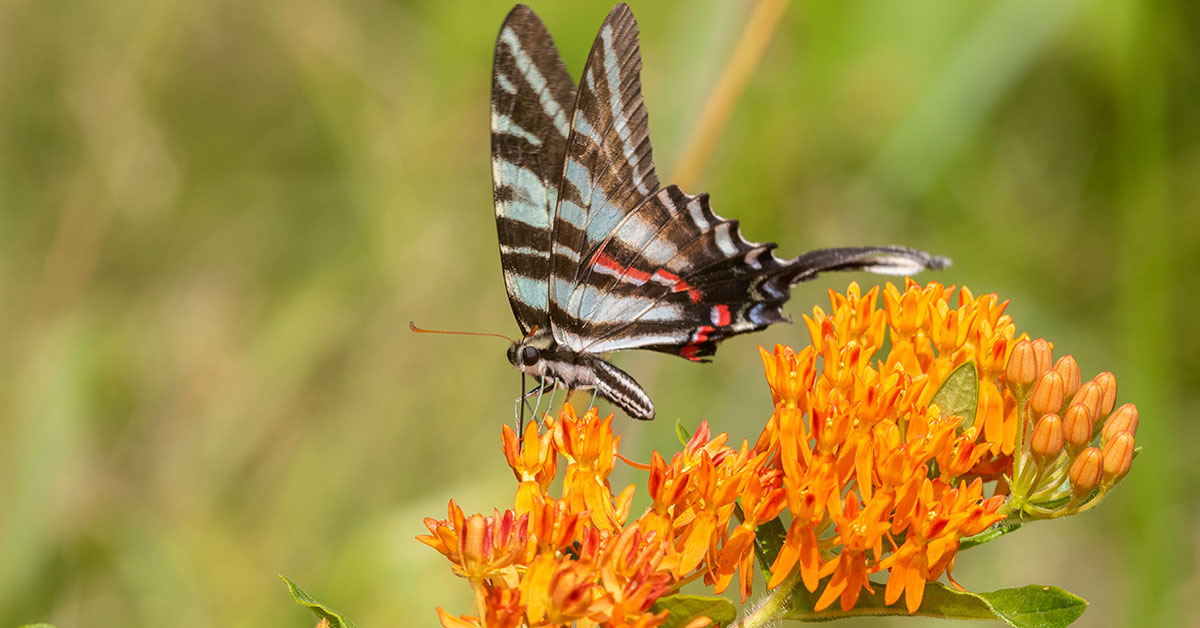Imagine a garden filled with colorful, vibrant flowers, and at any moment, a flurry of butterflies fluttering about, adding to the kaleidoscope of hues. This is the captivating scene that Butterfly Weed, or Asclepias tuberosa, can create in your outdoor space. As a perennial plant known for its fiery, bright-orange blooms, Butterfly Weed is not just an aesthetic marvel; it’s also a magnet for an array of butterflies, hummingbirds, and beneficial insects.
In this comprehensive guide, we’ll explore the wonders of Asclepias tuberosa – its native habitats, the American states it calls home, and most importantly, how to grow this charming plant successfully in your own garden.
Whether you’re a novice gardener seeking to create a vibrant splash in your backyard, or a seasoned horticulturist looking to boost local biodiversity, growing Butterfly Weed offers a uniquely gratifying experience. So, let’s delve into the world of this fascinating plant and learn how you can cultivate a personal butterfly haven right at home.
What is Butterfly Weed (Asclepias tuberosa)?
Butterfly Weed, scientifically known as Asclepias tuberosa, is a brightly colored perennial plant that belongs to the milkweed family. As its name suggests, it’s known for attracting butterflies – particularly the Monarch Butterfly, which lays its eggs on the plant, providing a food source for hatching caterpillars. Its vibrant, fiery orange flowers can brighten up any garden while offering ecological benefits as well.
The plant can grow up to three feet tall, forming clusters of upright stems topped with flat clusters of flowers. Apart from the brilliant flowers, it’s also known for its pointed, lance-shaped leaves, which add to its unique aesthetic. In addition to being a butterfly magnet, the Asclepias tuberosa also attracts hummingbirds and a variety of beneficial insects, making it an excellent addition to any biodiversity-focused garden.
Where is Butterfly Weed Native?
Butterfly Weed is native to North America, growing freely in the wild across many parts of the United States, Canada, and Mexico.
In the United States, Asclepias tuberosa can be found in a wide variety of regions, including states in the Northeast, Midwest, South, and West. The USDA Plant Database provides a distribution map showing that Asclepias tuberosa is native to all states east of the Rockies, as well as many states to the west including Texas, New Mexico, Colorado, North Dakota, and Oregon. It’s most commonly found in prairies, open woods, fields, and roadsides where it can enjoy plenty of sunlight.
How to Grow
Growing Butterfly Weed requires some attention and care, but its vivid beauty and environmental benefits make it a rewarding endeavor. Here are some essential steps to successfully grow Asclepias tuberosa in your garden:
- Choose the Right Location: Butterfly Weed thrives in full sunlight, needing at least 6 hours of direct sunlight a day. Choose a spot that can provide this light requirement. It also prefers well-drained soil and can tolerate poor, dry, or rocky soils.
- Planting Seeds: It’s best to sow seeds in the spring after the last frost. You can start seeds indoors in a seed tray or sow them directly into the ground. If starting indoors, cold stratify the seeds for a month before sowing, to mimic the natural freeze-thaw cycle and improve germination rates.
- Watering: Butterfly Weed is drought-tolerant once established, but until then, it requires regular watering. Be careful not to overwater, as it does not like “wet feet.” Allow the soil to dry out somewhat between waterings.
- Fertilizing: While Butterfly Weed can do well in poor soils, a light application of a balanced, slow-release fertilizer in the spring can help boost growth.
- Pruning and Maintenance: Pruning isn’t necessary for Butterfly Weed, but deadheading, or removing spent flowers, can encourage more blooms. In late fall or early spring, cut back the old growth to make way for new sprouts.
- Pest Control: While the plant is a host for Monarch caterpillars, watch out for aphids, which are also attracted to Asclepias tuberosa. If an infestation occurs, consider using an insecticidal soap or neem oil.
The beauty and ecological benefits of Butterfly Weed make it a valuable addition to any garden. By providing a habitat and food source for Monarch Butterflies and other pollinators, you’re not only adding color to your landscape but also contributing to local biodiversity and the overall health of our ecosystems.
What does it attract?
Butterfly weed (Asclepias tuberosa) is a plant native to North America that is well-known for its vibrant orange flowers. It is commonly called butterfly weed because it is highly attractive to butterflies. However, the plant also attracts other pollinators such as bees and hummingbirds.
The bright color of the flowers and the nectar of Asclepias tuberosa serves as a magnet for various butterfly species, including monarch butterflies. Monarchs, in particular, rely on butterfly weed as a food source for both their adult and larval stages. The plant provides nectar for adult monarchs and serves as a host plant for their caterpillars, which exclusively feed on milkweed plants like butterfly weed.
In addition to monarch butterflies, other butterfly species such as swallowtails, fritillaries, and skippers are also attracted to butterfly weed. The flowers’ shape and structure, along with the nectar they provide, make them accessible and appealing to these flying insects.
Bees are also attracted to Asclepias tuberosa due to its nectar. The flowers produce a sweet liquid that serves as a food source for bees, helping to support their population and contributing to pollination. Similarly, hummingbirds are known to visit butterfly weed to sip nectar from its flowers.
Overall, butterfly weed is a valuable plant for attracting and supporting a variety of pollinators, including butterflies, bees, and hummingbirds, making it a popular choice for butterfly gardens and wildlife habitats.













